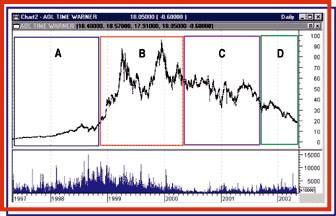SYSTEM DESIGN
Combining Stochastic RSI And Bollinger Bands
Developing A Trading System
by Dennis D. Peterson
If you've ever tried it, you know that developing a trading system is no easy task. But you may find that following a series of steps could help you reduce the learning curve. Here's an example.
There are three key features when it comes to developing a trading system: entry and exit signals, a plan for the type of stop, and a money management strategy. The first involves generating the signals, which can be purely visual, a result of technical indicators, or a combination of both. Most mechanical trading systems use indicators to encode visual signals. In this article I will take two of the better-known technical indicators and go through the steps involved in developing a trading system.
The two indicators I will be using are Bollinger Bands and stochastic
relative strength index (StochRSI). StochRSI, which combines the features
of stochastics and RSI, was detailed in Tushar S. Chande and Stanley Kroll's
book, The New Technical Trader. I selected this combination because
it is a useful way to determine when prices will stop tagging a Bollinger
band and are likely to move all the way from one band to the next. Of course,
those prices may not move all the way, so you will need to use stops for
protection. You will also want to use a simple money management strategy
of allocating only a portion of your capital to any one position.

Figure 1: DAILY AOL PRICE AND VOLUME. Price volatility is less before June 1998. For indicators that use price volatility such as StochRSI, you want to use fewer periods in the calculation to generate trading signals than you would prior to June 1998.
...Continued in the August 2002 issue of Technical Analysis of STOCKS
& COMMODITIES
Excerpted from an article originally published in the August 2002 issue of Technical Analysis of STOCKS & COMMODITIES magazine. All rights reserved. © Copyright 2002, Technical Analysis, Inc.
Return to August 2002 Contents